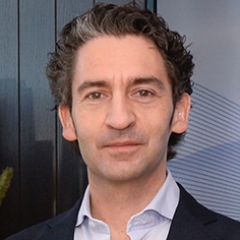ATTOSECOND QUANTUM DYNAMICS – DECIPHERING A CHEMICAL REACTION

- Physics and Astronomy Colloquium
October 31, 2025 3:30 PM -
October 31, 2025 4:30 PM
PAIS 1100
- Host:
- Jean-Claude Diels
- Presenter:
- Jens Biegert
 Chemical reactions are everywhere, but how do they work?
Chemical reactions are everywhere, but how do they work?
For example, to produce the fibres and plastics we see daily, the chemical industry uses a process called polymerisation. Polymerisation involves using carbon ring molecules, which are somehow opened and then connect to each other. The term "somehow” is the secret of the chemical industry, as the process can be complex, involving catalysts, pressure, and temperature. Since around 19% of the global energy budget is spent on chemical functionalisation, and only growth is expected, it is crucial to reduce its energy footprint. Simultaneously, it is beneficial for the chemical industry to enhance the efficiency of this process, as it directly influences a market worth approximately 0.5 trillion USD.
I will demonstrate how attosecond spectroscopy sheds light on the entire ring-opening process for the first time. A time-energy measurement allows us to disentangle various physical processes and quantum many-body interactions between electrons and nuclei. Clearly, understanding these quantum many-body interactions is vital for advancing fundamental science and has practical implications, such as in polymerisation. I will also explain how we generate attosecond pulses and apply them to the problem outlined above.
About the Speaker
Jens Biegert is ICREA Professor at ICFO and leads experimental research on Attoscience and Ultrafast Optics.
Biegert received his PhD in Physics in 2001 from the Technische Universität München, based on work at the University of New Mexico in the USA under the supervision of Jean-Claude Diels. The topic of his PhD was the physics of multiphoton coherent excitation of atomic sodium, with applications for astronomical guidestars.
After completing his PhD, he pursued his Habilitation to lead a group on attosecond science at ETH Zürich. Since 2007, at ICFO, he has pioneered mid-IR photonics, attosecond soft X-rays, and laserinduced electron diffraction, leading to breakthroughs in imaging chemical dynamics and carrier motion in quantum materials.
Currently, he coordinates a European Commission FET Consortium and participates in two additional FET consortia.
Jens Biegert is a Guest Professor at the Fritz Haber Institute of the Max Planck Society in Berlin. He is actively involved in the scientific community as a co-author of the white book with Gérard Mourou, which contributed to the development of the 1.2-billion-Euro European Extreme Light Infrastructure.
He serves on the Board of Directors of OPTICA, is Chair of the Meetings Council, and is part of the Strategic Planning and Finance Councils.
He previously served on the Board of Chairs of ARIE, the Analytical Research Infrastructures of Europe, which represents seven networks of European infrastructures involving 40,000 researchers.
He led Europe’s foremost laser network, “Laserlab-Europe,” as its Executive Director, uniting 46 leading research infrastructures across 22 European countries.
He is a Topical Editor of OPTICA and AAAS/CAS Ultrafast Science, and is a Fellow of the Studienstiftung des deutschen Volkes, OPTICA, and the American Physical Society.
He has received numerous awards, including the Thousand Talents Program Award of the People's Republic of China, the OSA Allen Prize, the Bessel Prize of the Humboldt Foundation, the ERC Advanced Grant, and the ERC Proof of Concept Grant.
